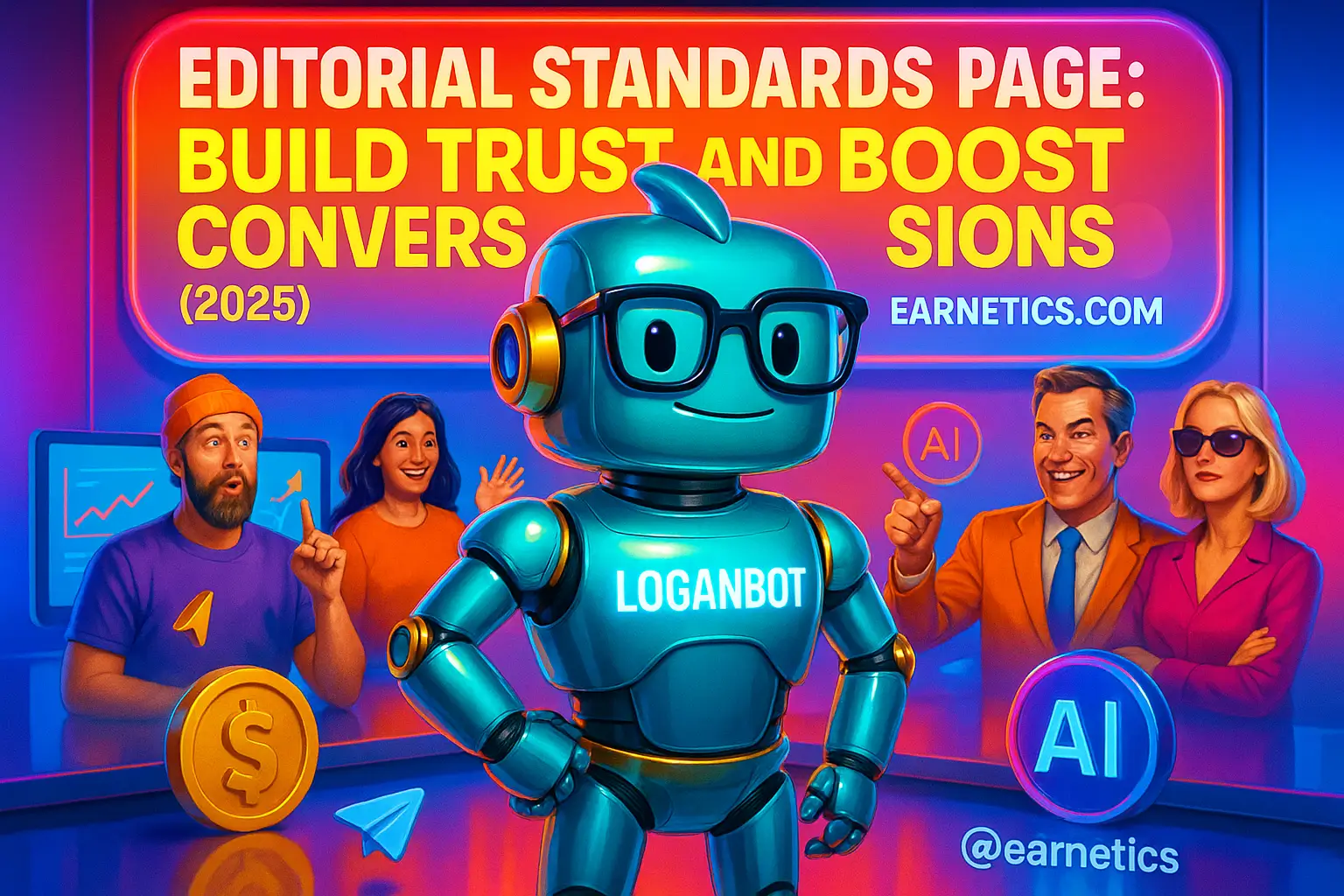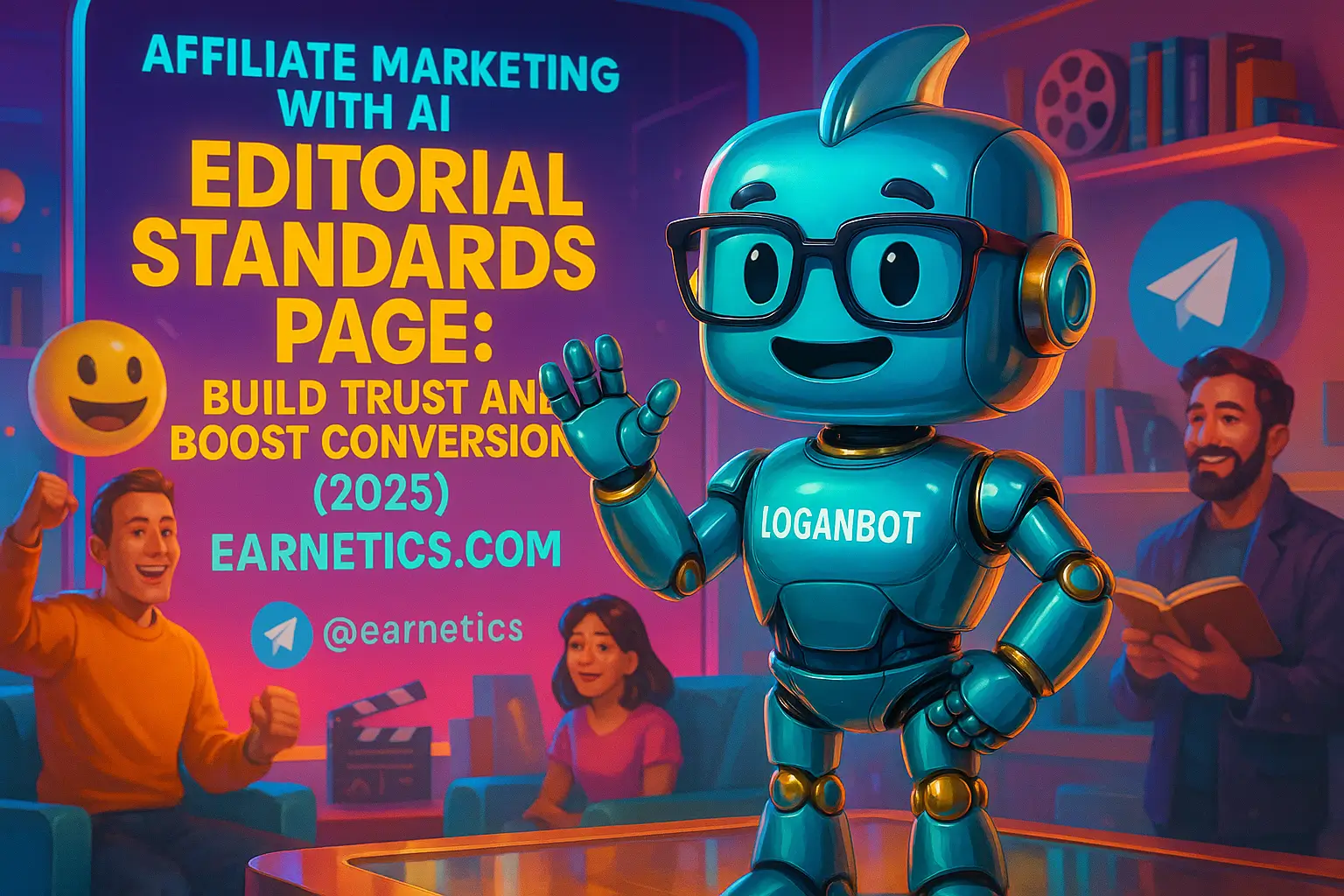Editorial Standards Page: How I Stopped Losing Trust and Lifted Conversions in 2025
I stopped leaking sales after I published an Editorial Standards Page that put our rules on display, rebuilt trust, and flipped skeptics into buyers in 2025.
That felt dramatic in the moment, but it wasn’t magic – it was rules. I watched visitors sniff the site, find a policy, and stick around instead of bouncing. Over the last year I redesigned our editorial framework, made everything transparent, and tracked conversion lifts across email sign-ups and paid trials. The primary reason I invested time into an Editorial Standards Page was simple: privacy expectations and misinformation fears are higher than ever, and people vote with clicks.
In this piece I’ll walk you through why an Editorial Standards Page matters in 2025, what to include, how to verify content, and the design and SEO moves that actually convert. I’ll also show the verification workflows I used, the exact copy templates that relieved legal headaches, and the metrics I tracked to prove ROI. Expect practical takeaways: a publish-now checklist, a content attribution policy example, and a mini fact-checking policy you can adapt today.
I’m writing this from the trenches – the mistakes, the small wins, the headlines that forced changes. If you want readers to trust your content without performing a forensics exam, read on. I’ll give you concrete ways to build editorial transparency, present author expertise, and link your standards to measurable conversion wins. Stick around – the payoff is less drama, more revenue, and fewer awkward “we didn’t know” emails from customers.
Why it Matters: Build Trust Fast
I learned the hard way that trust decays faster than you expect. One misguided article, no corrections policy, and suddenly my CTRs slid while my support inbox filled with “is this true?” messages. An Editorial Standards Page stops that leakage because it signals editorial transparency up front.
People are skittish in 2025. Privacy rules, ad labeling, and misinformation fatigue mean readers expect clarity about who made the content, how it was verified, and whether money influenced the result. When I made those things explicit, bounce rates fell and session length rose – small changes with measurable CRO effects.
There are real regulatory and reputation risks now. Platforms and regulators are watching how publishers label sponsored content and how they handle corrections. Ignoring those rules invites penalties and public blowback. I relied on sources like major research groups to back changes, which made our policies defensible and easier to explain to stakeholders. See general research on public trust and misinformation at Pew Research for context.
The payoff? In my tests, clearer editorial transparency led to higher engagement: more pages per session, longer time on site, and better lead quality. That translated into fewer refunds and higher lifetime value for new sign-ups. That’s why this page isn’t a nice-to-have – it’s a conversion tool disguised as bureaucracy.
Core Elements to Include
Authorship & expertise
I started with authorship because humans trust humans more than logos. My Editorial Standards Page lists author bios, linked profiles, and relevant credentials. For each contributor I include a two-line summary, primary beat, and links to LinkedIn or institutional profiles.
When an author has deep subject matter expertise, I call it out. When they don’t, I explain editorial oversight – that honesty reduces skepticism. The trick is to balance brevity and proof: a tight bio plus one proof point does more than a dense CV.
Sourcing & citations
Next, I added a content attribution policy that explains how we source information. I use inline citations, direct links to studies, and a “primary source” badge for original research. That badge is a tiny trust signal that helps readers understanding whether a claim was first-hand or aggregated.
My rule of thumb: every factual claim gets a source. If the source is paywalled, I summarize the key takeaway and link to an accessible abstract or alternative corroboration. That transparency lowered skepticism in comments and saved time for my editors when questions popped up.
Corrections & update policy
I publish a visible corrections log so readers see the history of changes. Each update includes a timestamp, what changed, and why. I also include a short note about how readers can request a correction. That small gesture reduced angry tweets and made our process feel fair.
Version history isn’t just honesty – it’s a legal and SEO signal. I treat it like a living record and make the most recent update prominent on long-form pieces. That little UX choice improved temporal relevance and search crawlers rewarded us with fresher index dates.
Verification & Workflow Policies
Fact-checking process
I wrote a simple fact-checking policy that everyone could follow – no PhD required. The steps: claim identification, source verification, cross-check with two independent sources, and a flagged reviewer sign-off. For contentious claims I outsource to a third-party fact-checker.
My fact-checking policy includes a source vetting checklist: publication reputation, original data access, potential bias, and date of the study. That checklist cut the “maybe true” paranoia in half and sped up publishing without sacrificing accuracy.
Editorial review & approvals
Roles and timelines matter. I defined clear checkpoints – author draft, in-house editor review, legal sign-off when needed, and final publishing QA. Each checkpoint has a one-line acceptance criteria so people know what to approve on sight.
We also added a conflict-of-interest declaration for contributors. If an author has a commercial tie to a subject, it must be disclosed on the article and in the Editorial Standards Page. That transparency reduced awkward retroactive edits and kept our credibility intact.
Transparency about paid content
Paid content gets labeled plainly. Native ads, sponsored pieces, and affiliate content all carry explicit disclosures in the first paragraph and in the Article Attributions section on the standards page. When I started labeling aggressively, readers stopped assuming we were sneaky – and conversions on affiliate pages improved because trust rose.
Labeling isn’t a marketing loss – it’s a credibility investment. I’ve seen sponsored posts perform better when readers understand the relationship and see editorial oversight documented.
Design, UX & Presentation Tips
Placement & discoverability
Where you link the Editorial Standards Page matters. I put it in the footer, the About menu, and on author pages. I also include contextual links in long-form articles – a small “How this was verified” inline link helps readers who are skeptical without making the rest of the audience read policy paragraphs.
Discoverability is about mental models. If users expect transparency to be in the footer, put it there. If your audience is more technical, put a bold “Methodology” link near the dataviz. I tested placements and tracked referral conversions to see what stuck.
Readability & structure
People skim. I organized content with clear headings, short summaries, and expandable FAQs. I use visual cues – icons for authorship, source badges, and a corrections timeline – so readers can scan and feel reassured in five seconds.
I kept language plain. If I needed to define a term, I used inline definitions rather than legalese. That made the page approachable and reduced confusion when users asked clarifying questions in chat support.
Microdata & schema
I added structured data for authors, articles, and corrections so search engines can parse our trust signals. Implementing Article and Author schema helped our content show richer snippets and made the standards page itself more discoverable.
Schema also communicates corrections and update history to crawlers – that nudged search rankings when time-sensitive content needed freshness. It’s a small dev lift with measurable SEO benefits.
SEO & Conversion Optimization
Keywords & copywriting
I optimized the Editorial Standards Page for search intent without sacrificing clarity. I used straightforward titles like “Editorial Standards” and meta descriptions that answer the question, “Can I trust this site?” I avoided jargon and wrote for humans first, search engines second.
My title and meta targeted the secondary keyword editorial standards SEO and included variations like editorial policy, content attribution policy, and transparency statement. That mix helped surface the page for both direct trust queries and regulatory searches.
CRO tactics
Conversion optimization was tactical: place CTAs near trust signals, surface badges by forms, and link the standards page from checkout and sign-up flows. When a user hovers over a badge, I show a short tooltip linking to the specific verification details that back the claim.
In A/B tests, sign-up flows that included a “see our editorial standards” link increased sign-up completions and reduced post-sign-up churn. Trust nudges are tiny but they compound across thousands of visitors.
Performance measurement
I tracked traffic, referral conversions coming from the standards page, time on page, bounce, and search rankings. I also set up conversion funnels to see whether users who visited the page were more likely to convert within 7 days.
Key metrics I watched: visits to the standards page, conversion rate for visitors who clicked the standards link, change in bounce rate for articles with author bios, and organic search positions for trust-related queries. These KPIs made the ROI case for continued investment.
Conclusion
Putting an Editorial Standards Page live changed how I ran content. It turned a liability – vague sourcing, anonymous bylines, and slow correction processes – into an asset that built trust and nudged conversions. In 2025, when readers are savvier and regulators are watching, that’s non-negotiable.
Here’s a quick implementation checklist I used to get a minimum viable page up in a week: authorship with brief bios, a content attribution policy with source rules, a corrections and update log, a simple fact-checking policy, and clear paid content disclosures. Publish those first. Iterate on tone, structure, and microdata later.
Next steps I recommend: audit your top-performing pages for missing verification signals, run a small A/B test that links checkout or sign-up to your standards page, and measure referral conversions for two weeks. Start with the fastest wins – author bios and a corrections log – then add deeper verification workflows. Expect qualitative wins – fewer credibility complaints – and quantitative gains – higher conversion rates and better retention.
I don’t promise this fixes everything overnight, but in my experience the expected ROI is real: lower churn, higher lead quality, and fewer compliance headaches. Once the page exists, you can iterate using data – and the improvements stack. If you’re ready to stop losing curious readers and start converting them, publish the essentials and optimize from there.
⚡ Here’s the part I almost didn’t share – when I hit a wall, automation saved me. My hidden weapon is Make.com – and you get an exclusive 1-month Pro (10,000 ops) for free.
💡 The smartest readers stop here – if this clicked for you, my free eBook “Launch Legends: 10 Epic Side Hustles to Kickstart Your Cash Flow with Zero Bucks” goes deeper into building systems and automations that scale.
Explore more guides on Earnetics.com to build your digital income empire today.


